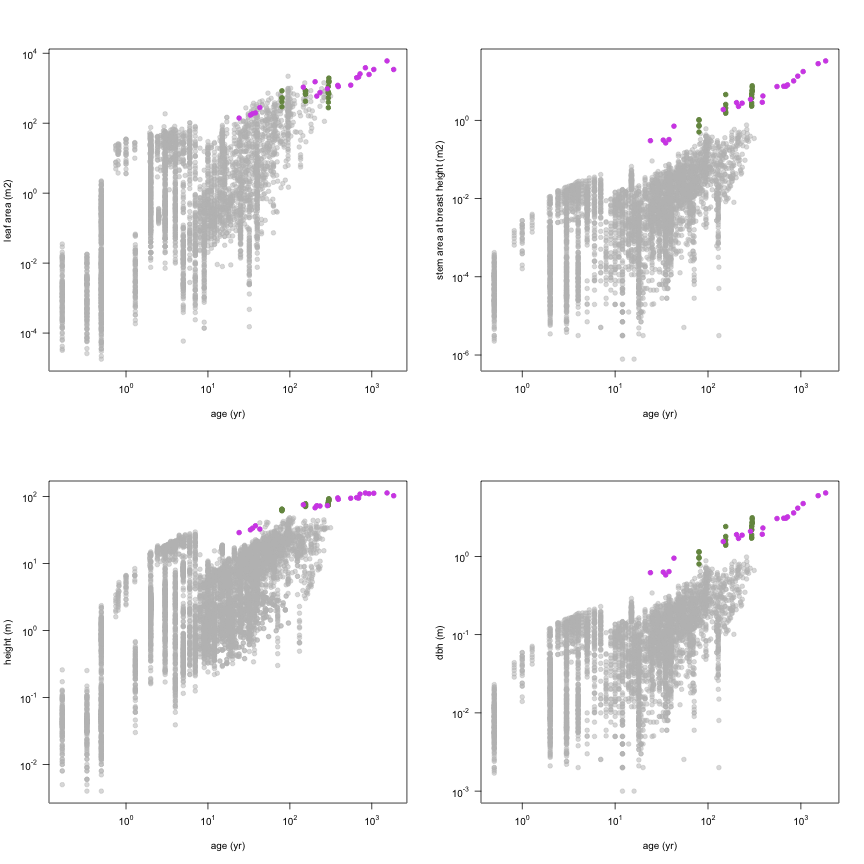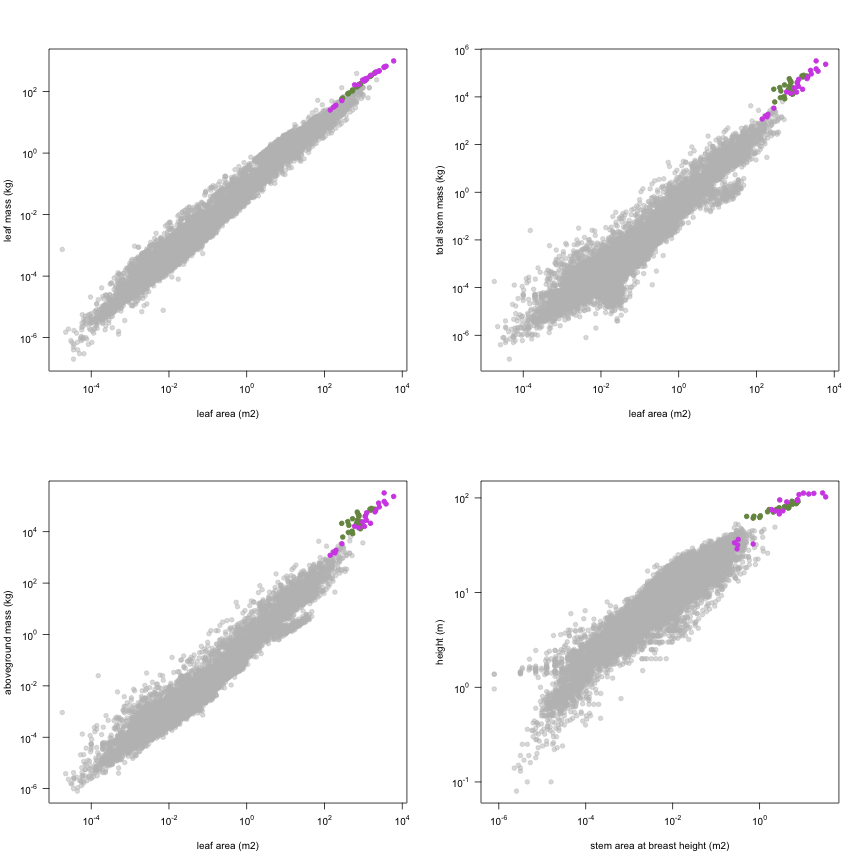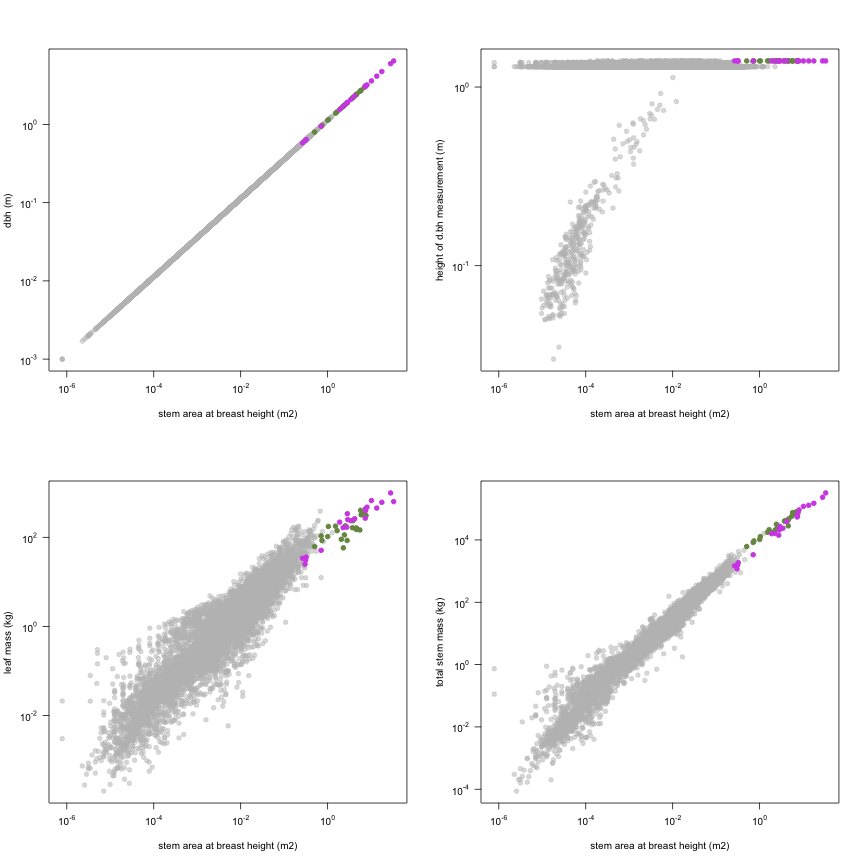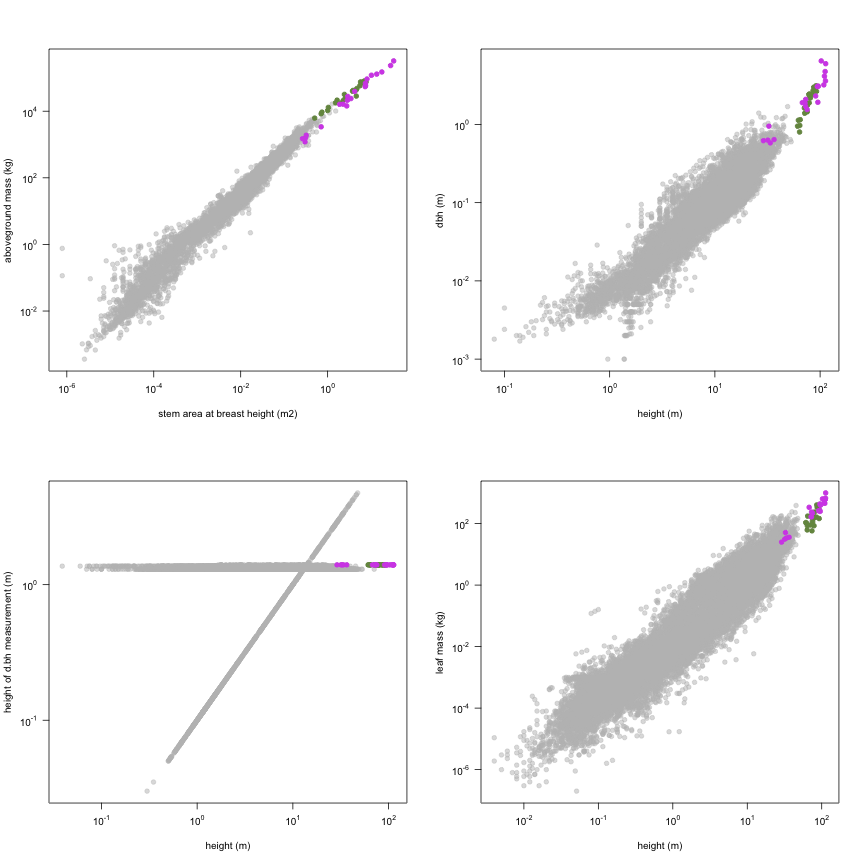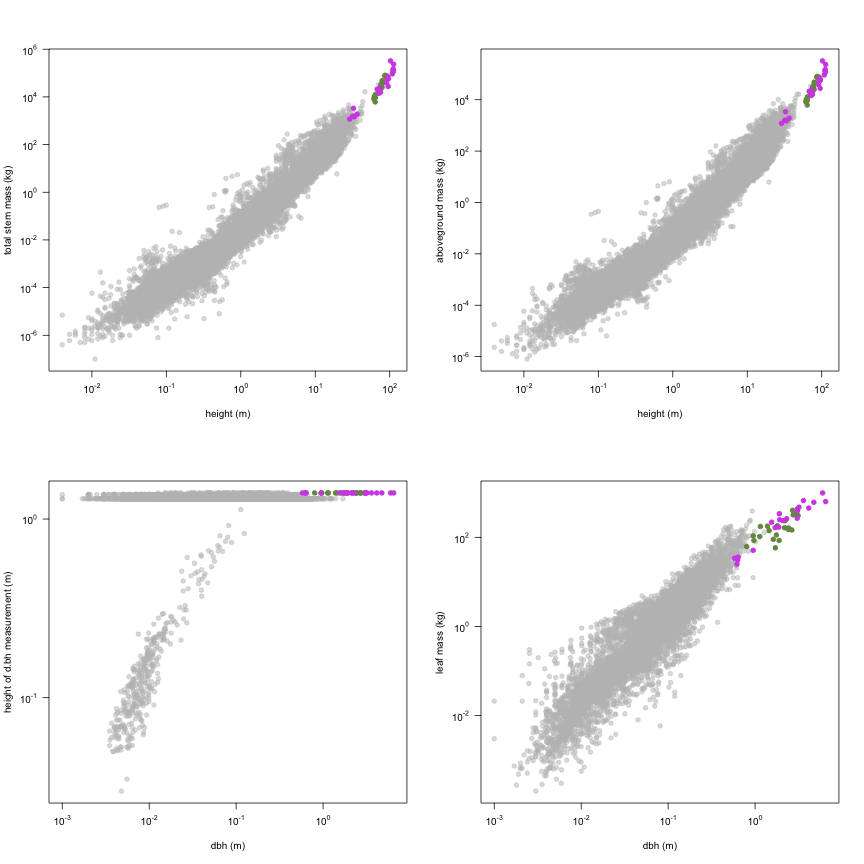-
Notifications
You must be signed in to change notification settings - Fork 19
Sillett2010
Data contributor: Stephen C. Sillett
Email: [email protected]
Address:
- Department of Forestry and Wildland Resources, Humboldt State University, Arcata CA 95521, USA
Citation: Sillett SC, Van Pelt R, Koch GW, Ambrose AR, Carroll AL, Antoine ME and Mifsud BM (2010). 'Increasing wood production through old age in tall trees.' Forest Ecology and Management, 259(5), pp. 976-994.
DOI: 10.1016/j.foreco.2009.12.003
Abstract: How long forest trees can sustain wood production with increasing age remains an open question, primarily because whole-crown structure and growth cannot be readily measured from the ground or on felled trees. We climbed and directly measured crown structures and growth rates of 43 un-suppressed individuals (site trees) of the two tallest species - Eucalyptus regnans and Sequoia sempervirens - representing a wide range of tree sizes and ages. In both species, ground-level measurements of annual growth, including height, ring width, and basal area increment, exhibited the oft-reported trend of decreasing growth (or no change in growth) with age, yet wood production of the entire main trunk and whole crown both increased with size and age up to and including the largest and oldest trees we measured. The balance between structural metrics of whole-crown respiratory demands (cambium area, inner bark volume, sapwood volume, and heartwood deposition area) and photosynthetic capacity (leaf area and green bark area) was statistically independent of size but not age. After accounting for the effect of size, trees with lower potential respiratory demands grew more than trees with higher potential respiratory demands per unit photosynthetic area. The strongest determinant of tree energy balance was the ratio of aboveground cambium area to leaf area. Among the site trees we examined, over 85% of the variation in annual wood production was explained by variation in size, and the proportion of total aboveground wood production in appendages (branches, limbs, and reiterated trunks) increased linearly with size. With increasing age in both species, the proportion of annual wood production converted to heartwood increased in main trunks and appendages. The oldest tree we measured produced more heartwood in its main trunk over 651 years (351 m3) than contained in any tree we measured < 1500 years old. The two tallest tree species achieve similar stature despite divergent growth dynamics and ecologies. At one extreme, E. regnans attains great size quickly but dies relatively young because trees are susceptible to fire and fungi. At the other extreme, S. sempervirens attains great size more slowly but has a long lifespan because trees resist fire and prioritize investment in decay-resistant heartwood. Increasing wood production as trees age is a mechanism underlying the maintenance of biomass accumulation during forest development and the carbon-sink capacity of old-growth forests.
The dataset includes records for 43 individuals from 2 species belonging to 2 family(ies), presenting 2 functional type(s), growing in 1 condition(s) within 1 major type(s) of habitat, with data included for the following variables:
| Variable | Label | Units | N | Min | Median | Max |
|---|---|---|---|---|---|---|
| latitude | Latitude | deg | 43 | -37 | -37 | 40 |
| longitude | Longitude | deg | 43 | -124 | 145 | 145 |
| age | Age | yr | 43 | 24 | 295 | 1847 |
| a.lf | Leaf area | m2 | 43 | 140 | 839 | 6018 |
| a.stbh | Stem area at breast height | m2 | 43 | 0.26 | 2.9 | 33 |
| h.t | Height | m | 43 | 29 | 78 | 113 |
| d.bh | Dbh | m | 43 | 0.58 | 1.9 | 6.5 |
| h.bh | Height of d.bh measurement | m | 43 | 1.4 | 1.4 | 1.4 |
| m.lf | Leaf mass | kg | 43 | 25 | 175 | 992 |
| m.st | Total stem mass | kg | 43 | 1175 | 27451 | 322566 |
| m.so | Aboveground mass | kg | 43 | 1200 | 27700 | 323200 |

And locally within the country:


The sites sampled are:
| Location | Longitude | Latitude | Vegetation |
|---|---|---|---|
| Wallaby Creek, Kinglake National Park, Victoria, Australia | 145.0 | -37 | Temperate forest |
| Bull Creek, Humboldt Redwoods State Park, California, USA | -123.8 | 40 | Temperate forest |
The growing conditions of sampled plants was:
| Location | growingCondition |
|---|---|
| Wallaby Creek, Kinglake National Park, Victoria, Australia | field wild |
| Bull Creek, Humboldt Redwoods State Park, California, USA | field wild |
| Species | Family | Pft |
|---|---|---|
| Eucalyptus regnans | Myrtaceae | evergreen angiosperm, evergreen gymnosperm |
| Sequoia sempervirens | Cupressaceae | evergreen angiosperm, evergreen gymnosperm |
Sampling strategy: Dominant and co-dominant trees of 3 height classes were selected for detailed study from the tallest conifer-dominated and angiosperm-dominated forests including the tallest known individuals. Each tree's main trunk and all appendages were mapped nondestructively in a 3D framework and then re-mapped exactly 1 year later to quantify growth. Increment cores were collected at multiple heights along main trunk, and destructive sampling of appendages allowed determination of minimum tree age, biomass, aboveground structure, and annual growth.
Leaf area: Leaf area was quantified by a hierarchical subsampling procedure involving 100 % inventory of all branches on the tree. This was accomplished by climbing trees and mapping their crowns. A random sample of branches stratified by height and diameter was then destructively sampled and equations were developed to predict whole-branch quantities using data obtained during crown mapping. Leaf mass was converted to leaf area by scanning subsamples of leaves to determine SLA.
Stem cross sectional area: Stem cross sectional areas were measured at multiple heights via tape during crown mapping.
Height: Height was measured directly by lowering a fiberglass tape from highest leaves to average ground level.
Biomass: Biomass was determined by hierarchical sampling beginning with 100% inventory of all aboveground structures followed by subsampling. 3D computer models ensured that there were no errors in XYZ coordinates of all woody elements in the tree. Destructive sampling, including increment coring, yielded bark, sapwood, and heartwood radii for all woody components. Subsamples were measured fresh and then dried and weighed to determine densities.
Growth environment: Field, wild.
Year collected: 2005-2007
This is how the study Sillett2010 fits in the entire dataset (grey). each colour represents a species. A legend of species names with colours is included at the end for reports with 1 < n < 20 species.
